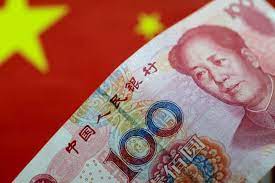Chinese Yuan Depreciates Against The Dollar to 16-Year Low
On Thursday, the Chinese yuan briefly fell to a 16-year low against the dollar, sparking concerns that Beijing would lower the currency to support struggling exporters and stop the worsening economic downturn.
Yuan-to-dollar exchange rates dropped to 7.32 before rising to 7.26 as a result of what financial experts believed to be purchasing by Chinese banks to strengthen the currency. As a result, one yuan was worth around 13.8 cents.
Exporters benefit from a lower yuan since their products are less expensive overseas, but Beijing has pledged to prevent “competitive devaluation.” Relations with Washington and other countries are strained by complaints that China gains an unfair trade advantage by maintaining a weak yuan.
Will the currency merely continue to decline gradually, said Thomas Mathews of Capital Economics? That might be one of the most important avenues via which they really help the economy.
However, Mathews warned that allowing the yuan to fall too far may lead businesses and investors to wonder if Beijing is altering its monetary policy.
He stated, “They’ve had issues with this kind of stuff in the past. They “will be quite anxious about it.”
In the three months that ended in June, economic growth decreased to 0.8% compared to the prior quarter from 2.2% in the preceding months of January to March. That translates to 3.2% annual growth, which would be some of China’s poorest in recent memory.
In closely regulated trade, the yuan is permitted to change 2% from its daily beginning price established by the government. That limits daily fluctuations, but a few bad days might accumulate into a significant shift over time.
The People’s Bank of China made no mention of trying to halt the most recent fall.
After the exchange rate dropped to below 7.2 to the dollar the previous year, banks were instructed to “maintain the basic stability” of the currency. Last October, the yuan reached a low of 7.30 to the dollar. In 2007, it last traded below 7.32.
2019 saw a decline in the yuan due to trade disputes with the then-President Donald Trump. There was no official confirmation, but it led to speculation that Beijing was attempting to mitigate the effects of the U.S. tariff increases. Later, the currency gained strength.
Tuesday, the central bank lowered the interest rate on a one-week loan to banks from 1.9% to 1.8%. Although the difference was small, it contributed to Chinese rates moving in the opposite direction from those in the United States, which are at a two-decade high.
The Federal Reserve said this week that it would be willing to contemplate another rate rise to curb inflation, which made the dollar seem even more appealing as an investment.
According to official figures released this week, consumer and business activity in China continued to decline in July.
Exports decreased 14.5% from a year ago, according to customs statistics, as a result of rate rises in the United States and Europe that slowed consumer demand.







